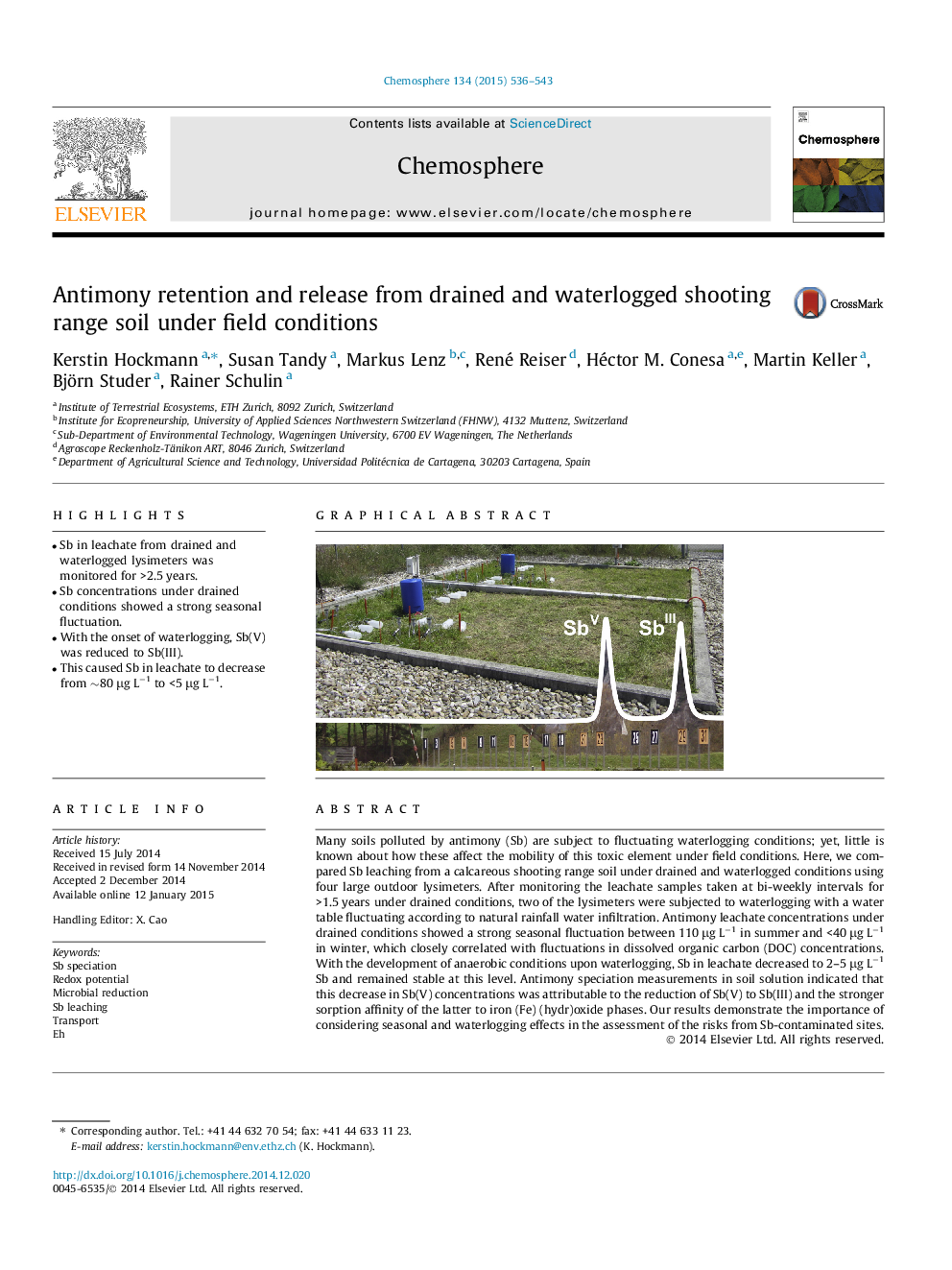| Article ID | Journal | Published Year | Pages | File Type |
|---|---|---|---|---|
| 6307758 | Chemosphere | 2015 | 8 Pages |
â¢Sb in leachate from drained and waterlogged lysimeters was monitored for >2.5 years.â¢Sb concentrations under drained conditions showed a strong seasonal fluctuation.â¢With the onset of waterlogging, Sb(V) was reduced to Sb(III).â¢This caused Sb in leachate to decrease from â¼80 μg Lâ1 to <5 μg Lâ1.
Many soils polluted by antimony (Sb) are subject to fluctuating waterlogging conditions; yet, little is known about how these affect the mobility of this toxic element under field conditions. Here, we compared Sb leaching from a calcareous shooting range soil under drained and waterlogged conditions using four large outdoor lysimeters. After monitoring the leachate samples taken at bi-weekly intervals for >1.5 years under drained conditions, two of the lysimeters were subjected to waterlogging with a water table fluctuating according to natural rainfall water infiltration. Antimony leachate concentrations under drained conditions showed a strong seasonal fluctuation between 110 μg Lâ1 in summer and <40 μg Lâ1 in winter, which closely correlated with fluctuations in dissolved organic carbon (DOC) concentrations. With the development of anaerobic conditions upon waterlogging, Sb in leachate decreased to 2-5 μg Lâ1 Sb and remained stable at this level. Antimony speciation measurements in soil solution indicated that this decrease in Sb(V) concentrations was attributable to the reduction of Sb(V) to Sb(III) and the stronger sorption affinity of the latter to iron (Fe) (hydr)oxide phases. Our results demonstrate the importance of considering seasonal and waterlogging effects in the assessment of the risks from Sb-contaminated sites.
Graphical abstractDownload full-size image
